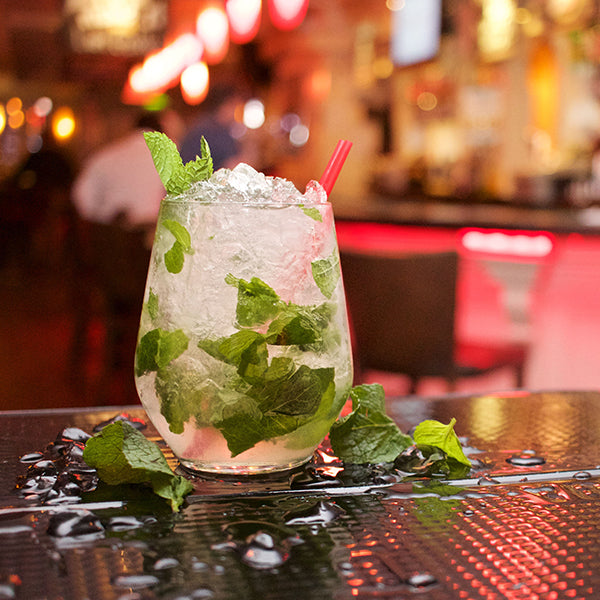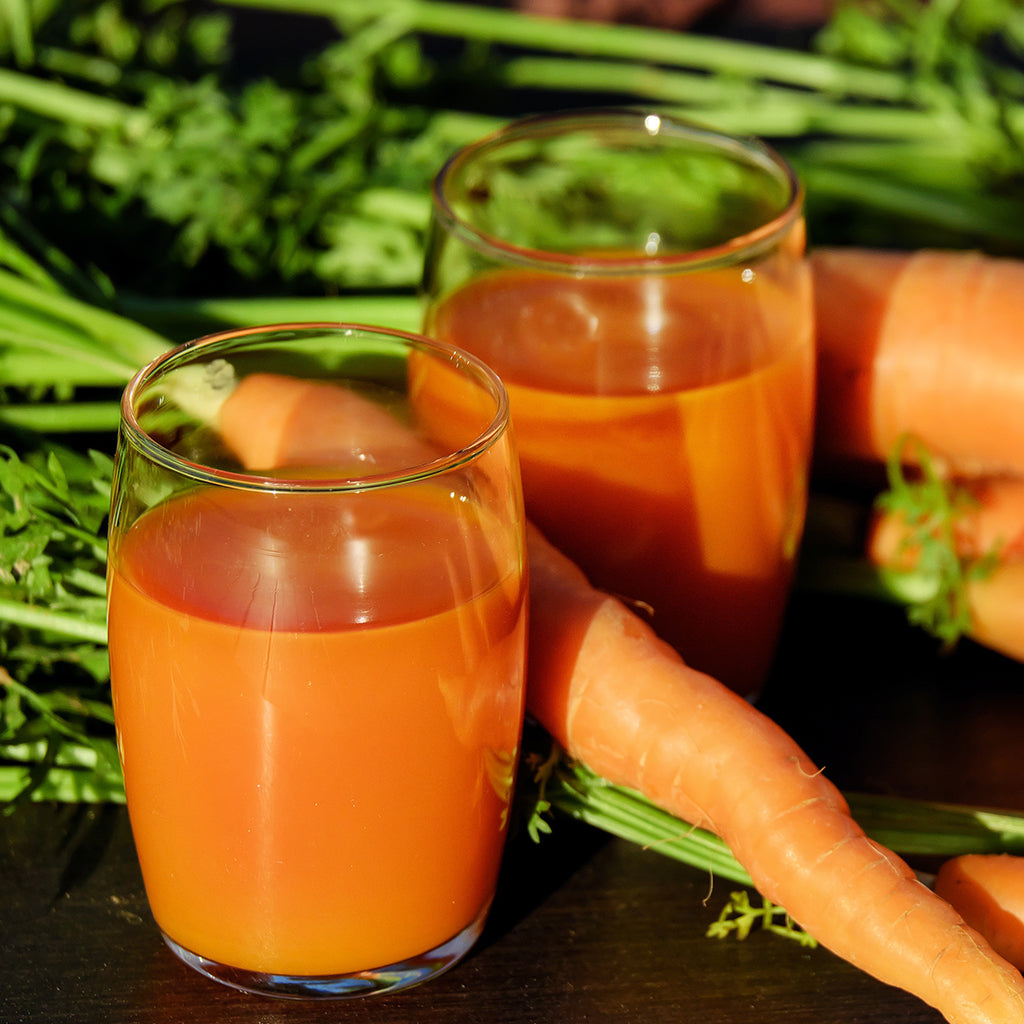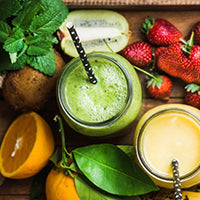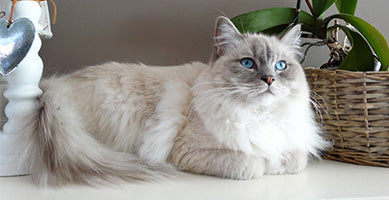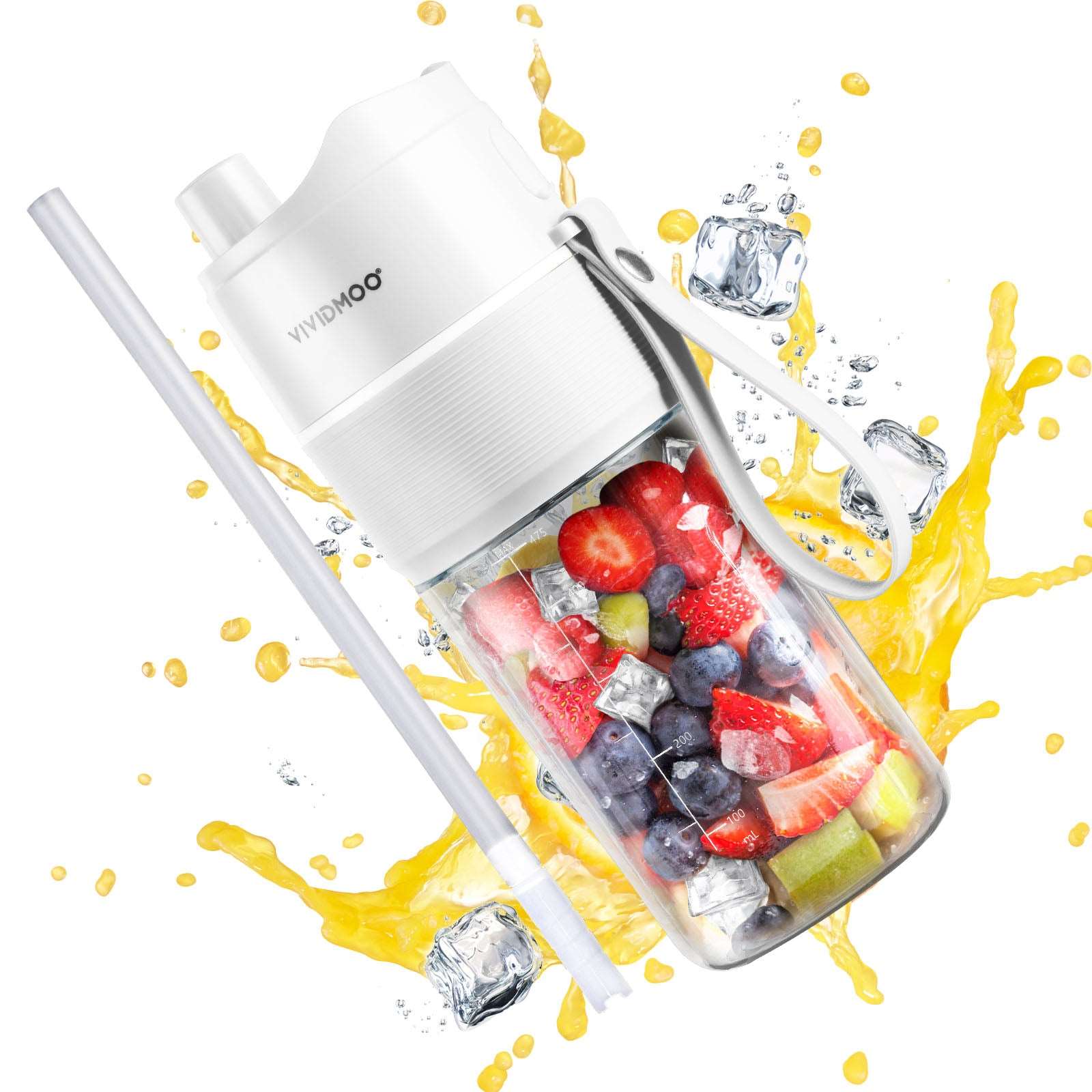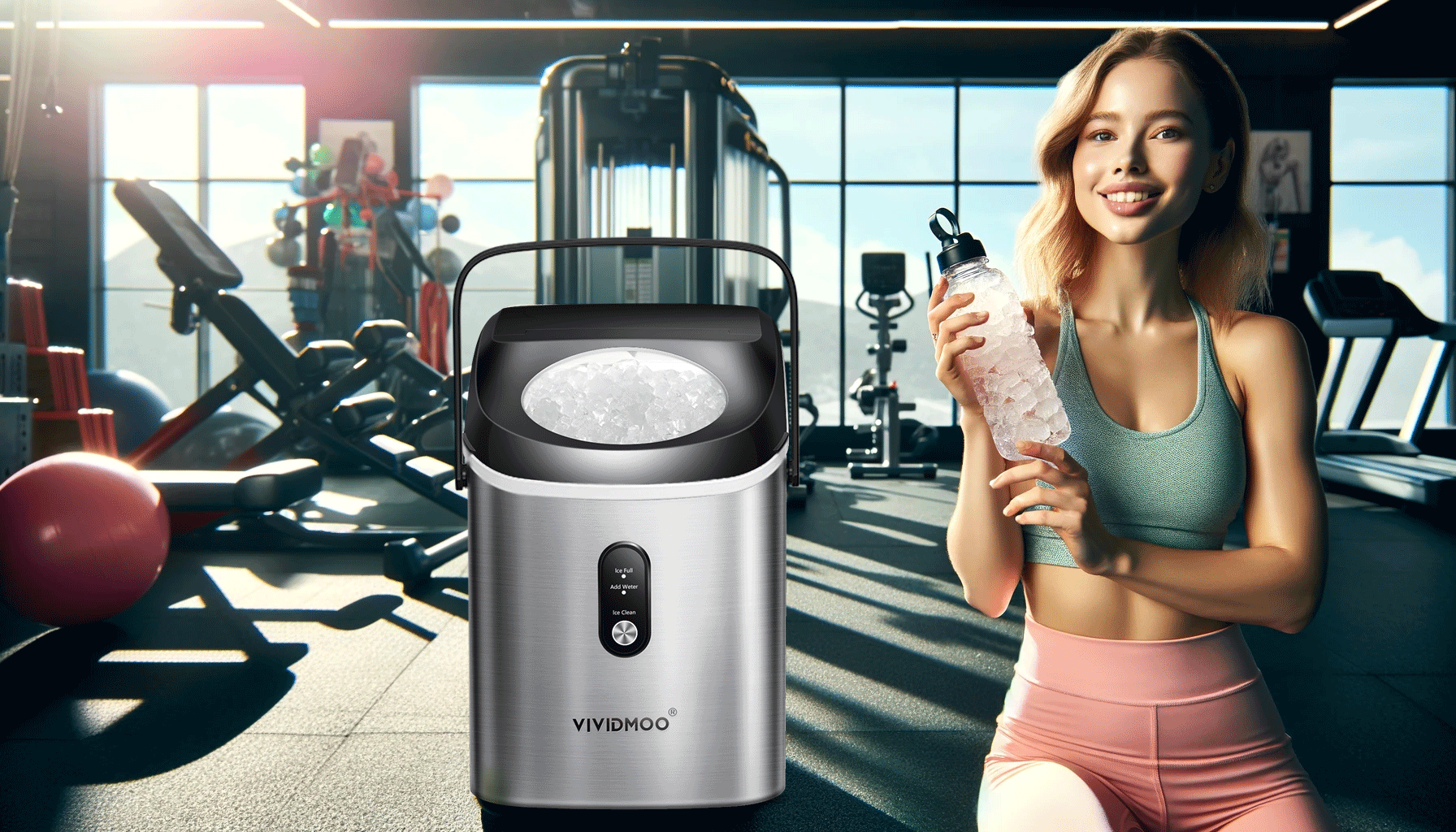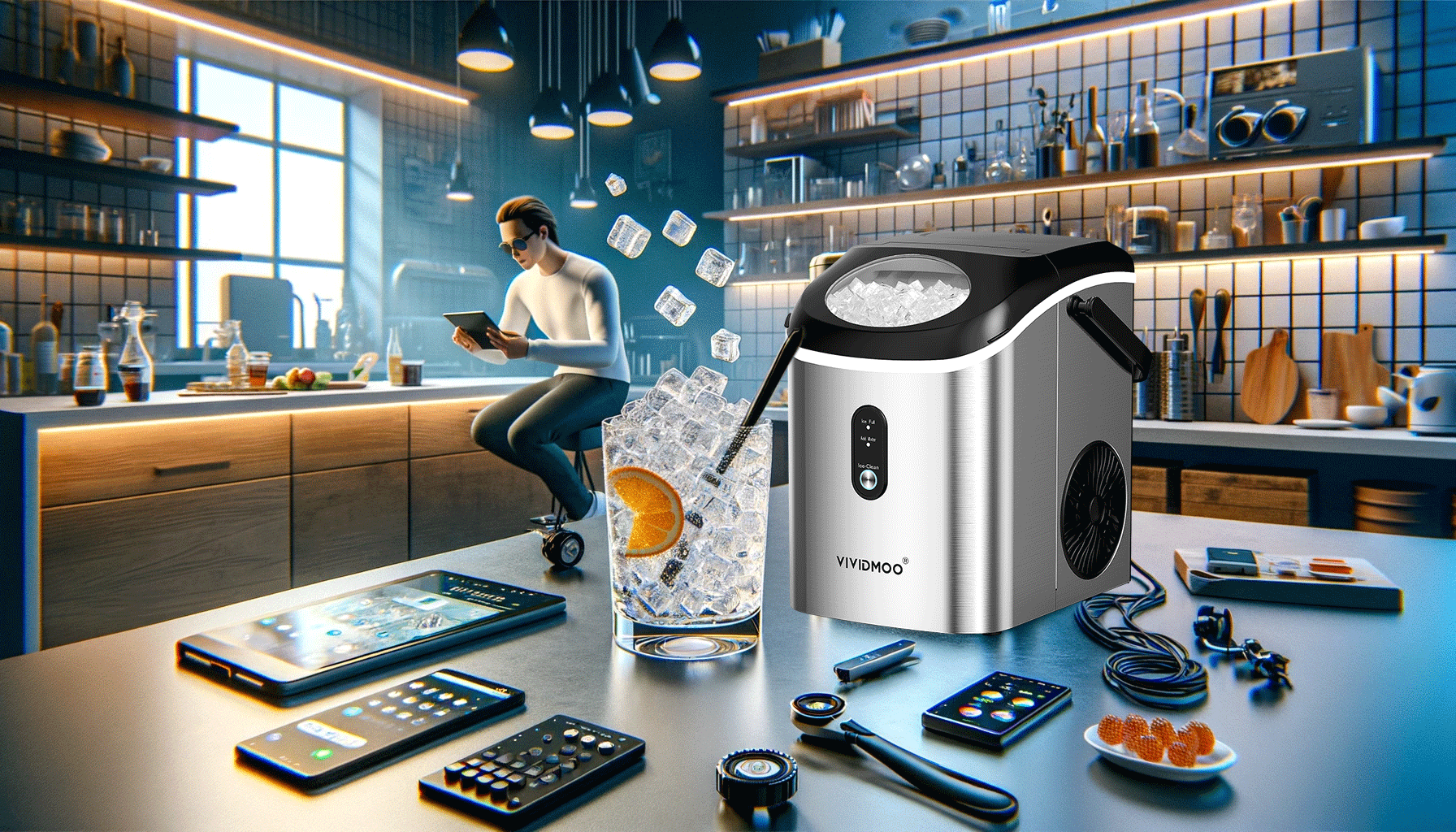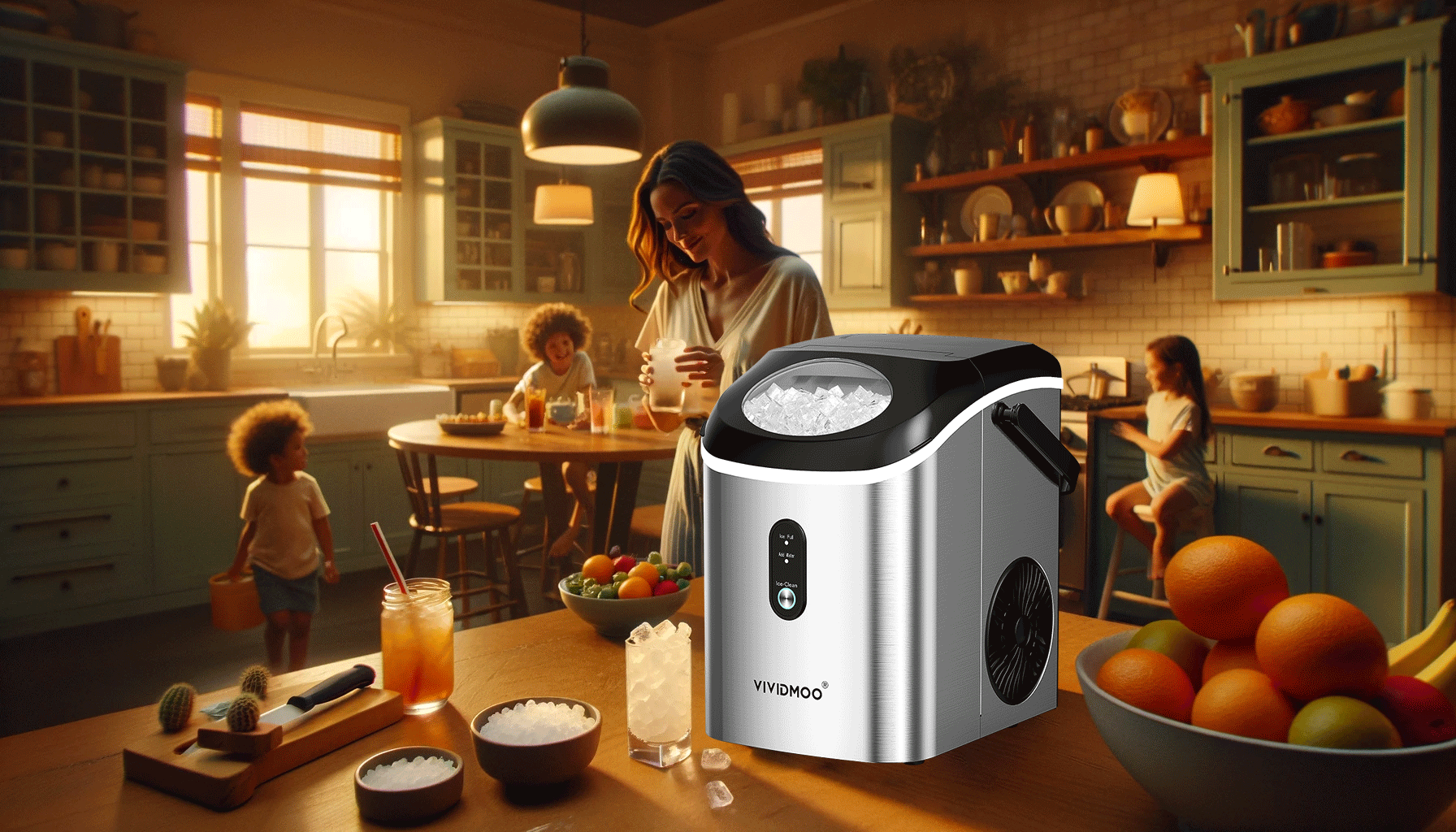
Jessica W. Kelvin
Mar.01.2024
Fizz vs. Bubbles:
The Curious Case of Soft Drinks vs. Sodas
Decoding the Bubbly World Beyond Just a Name
Have you ever wondered if there's a real difference between soft drinks and sodas, or is it just a tomato-tomahto situation? Join us as we pop the lid off this carbonated conundrum, exploring the effervescent world where science meets culture.

Table of Content
- The Bubbly History: A Tale of Two Terms
- Science of the Fizz: What Makes Them Tick?
- Cultural Bubbles: A Regional Preference
- The Ice Factor: Chilling with Nugget Ice
- Decoding the Labels: Ingredients and Health Considerations
- Soda Pop Culture: From Classic Ads to Modern Memes
- Frequently Asked Questions
- Conclusion
1、The Bubbly History:
A Tale of Two Terms
The journey of carbonated beverages from a scientific curiosity to a staple of modern life is as fascinating as it is fizzy. The story begins in the mid-18th century with Joseph Priestley, who discovered a method to infuse water with carbon dioxide, creating the first carbonated water. This invention laid the groundwork for the future of soft drinks and sodas, as entrepreneurs quickly saw the potential for a new kind of beverage.
The terms "soft drink" and "soda" emerged as these beverages evolved. Originally, "soft drink" referred to any drink without alcohol, distinguishing them from "hard" alcoholic drinks. "Soda," on the other hand, has its roots in the sodium salts originally used in the carbonation process. Regional variations in terminology sprung from these beginnings, with "soda" becoming prevalent in parts of the United States, while "soft drink" took a more global foothold.
The late 19th and early 20th centuries saw a boom in the popularity and diversity of carbonated beverages. With the advent of flavored syrups, carbonated water transformed into the sodas we recognize today. Brands like Coca-Cola and Pepsi became household names, each with their own secret recipes and dedicated followings. The competition between these giants spurred innovations in marketing, distribution, and flavor, laying the foundation for the global beverage industry.
This history is not just a series of dates and inventions; it's a reflection of human ingenuity and the desire for enjoyment in everyday life. The evolution from simple carbonated water to a myriad of soft drinks and sodas speaks to the creativity and entrepreneurial spirit of those who saw potential in a glass of fizzy water. As we explore the differences and debates between soft drinks and sodas, we're also celebrating a history of innovation that has brought joy to generations.
- Katerina Herman
Top 1 Popular Presents This Year
Nugget Ice vs Crushed Ice
Nugget ice and crushed ice are two distinct types of ice that are often confused for one another. Nugget ice is made by layering flaked ice together, which creates pockets of air within the pellet ice nuggets. These air pockets give Nugget ice its signature chewy texture, making it a popular choice for snacking or adding to drinks. On the other hand, crushed ice is made by crushing large cubes of ice into smaller, more jagged pieces. While the size of the crushed ice pieces can vary, they still maintain the hard texture of the original ice cubes. Crushed ice is often used as a cooling agent for drinks or for creating a slushy texture in blended drinks. Overall, Nugget ice and crushed ice have different textures and are made using different processes. While both can be used for similar purposes, they offer unique experiences and can greatly impact the taste and texture of your drinks and snacks.
Finley Closed Toe Heel
Light cork makes it easy to walk in heels. Podiatrists advise avoiding flat insoles for most foot types. But it’s especially important for those with flat feet who need a shoe with the right arch to provide the balance and support they need. These lightweight cork heels have built-in arch support and a memory foam footbed to hug your feet. Although the heel height is above the recommended three inches, the toe platform compensates for the height, and they’ve been specially designed to distribute weight evenly and support your unique arch position.
Ziva Kitten Heel
A timeless classic that provides ankle support with the backstrap and a flared heel for added stability. Podiatrists recommend wearing supportive flats for sore feet, but if you want to spice up your outfit with comfortable heels, the lower the better. Our expert suggests looking out for shoes with improved heel midsole cushioning and support. This can help protect the plantar fascia from becoming strained. These kitten heels feature a contoured foot design and deep heel cups that support the fascia in your feet. Note that these shoes are a little narrow - they may not be great for people with wide feet.
Everly Pump
Available in three widths, these pumps feature walkable heels and provide non-slip outsoles. With a pair of pumps like these Naturalizer Everly heels, you may be able to get through the day without any discomfort. They sit below the recommended 3-inch heel height and feature the brand’s signature open-cell foam padding to make it feel like you’re wearing the shoes and not the other way around. Choose from one of three widths (narrow, medium, wide) and strut with a pair of shoes that works for day or night, casual or special occasions.
Round-Toe Chunky Heels
These rounded-toe shoes provide an antibacterial, deodorizing cushion to keep your feet fresh. Anyone who has bunions should pay special attention to the toe box. Rounded or square boxes are better because pointed ones will add more pressure in that area. These heels from Vivaia have rounded toes to prevent worsening bunions, and their upper areas are knitted with flexible stretch. They’re also quite low at a little less than two inches to ease the pressure from your feet. And they have a non-slip rubber sole to help you stay put. If you have wide feet, we recommend selecting one size up for extra comfort.
2、Science of the Fizz: What Makes Them Tick?
The effervescence that defines soft drinks and sodas is more than just a sensory pleasure; it's a marvel of chemistry. Carbonation, the process of dissolving carbon dioxide gas in liquid, creates the bubbles that give these beverages their characteristic fizz. This process isn't merely about adding gas to liquid; it's a delicate balance that requires precise conditions to maintain the dissolved CO2 until the bottle or can is opened.
Temperature plays a critical role in carbonation; CO2 dissolves more readily in cold liquids than in warm ones. This is why sodas are refrigerated or served over ice, as it enhances their fizzy quality. Pressure is also crucial; carbonated beverages are sealed under high pressure to keep the CO2 dissolved. Opening a bottle releases the pressure, allowing the CO2 to form bubbles and escape, creating the fizz.
The sensation of carbonation is not just mechanical; it's also sensory. Carbon dioxide reacts with water to form carbonic acid, which stimulates the sour taste receptors on our tongues. This mild acidity is what gives carbonated beverages their refreshing bite, a quality that manufacturers have learned to balance with sweetness and flavor.
The science of carbonation also explains why not all fizzy drinks are created equal. The level of carbonation can vary, affecting the beverage's taste, mouthfeel, and overall experience. Some prefer the sharp, intense fizz of certain sodas, while others enjoy the gentler effervescence of soft drinks. The choice of carbonation level is a subtle art that beverage makers fine-tune to match their product's flavor profile and target audience.
Understanding the chemistry behind carbonation not only enhances our appreciation of soft drinks and sodas but also connects us to the natural world. Carbonated springs, where water naturally absorbs CO2 from the earth, have been valued for their therapeutic properties since ancient times. The science of fizz bridges the gap between natural phenomena and human innovation, turning a simple chemical process into a global cultural phenomenon.
The sensation of carbonation is not just mechanical; it's also sensory. Carbon dioxide reacts with water to form carbonic acid, which stimulates the sour taste receptors on our tongues. This mild acidity is what gives carbonated beverages their refreshing bite, a quality that manufacturers have learned to balance with sweetness and flavor.
Opt for Platform Heels
The science of carbonation also explains why not all fizzy drinks are created equal. The level of carbonation can vary, affecting the beverage's taste, mouthfeel, and overall experience. Some prefer the sharp, intense fizz of certain sodas, while others enjoy the gentler effervescence of soft drinks. The choice of carbonation level is a subtle art that beverage makers fine-tune to match their product's flavor profile and target audience.
3、Cultural Bubbles: A Regional Preference
Soft drinks and sodas also reflect cultural attitudes towards health, leisure, and consumption. In some societies, choosing a particular brand or type of beverage can signal social status, personal values, or group affiliation. The rise of craft sodas and artisanal brands speaks to a growing desire for authenticity, quality, and variety, challenging the dominance of global giants.
The debate over soft drinks vs. sodas is thus a window into the broader conversations about identity, tradition, and change in a globalized world. Whether it's a can of soda, a bottle of pop, or a glass of soft drink, what we're really savoring is a mix of history, science, and culture, carbonated for our pleasure.
4、The Ice Factor: Chilling with Nugget Ice
Enter the world of chewable ice, a.k.a. nugget ice, and its unique relationship with soft drinks and sodas. Why do aficionados prefer nugget ice, and how does it enhance the drinking experience? Mention the Countertop Nugget Ice Maker by Vividmoo as the perfect home accessory for enthusiasts.
5、Decoding the Labels: Ingredients and Health Considerations
Analyze what goes into a bottle of soda or soft drink. Discuss the health implications of regular consumption and tips for enjoying these beverages responsibly.
6、Soda Pop Culture: From Classic Ads to Modern Memes
Explore the iconic status of soft drinks and sodas in popular culture. How have advertisements, movies, and memes solidified these beverages in the global consciousness?
Understanding the chemistry behind carbonation not only enhances our appreciation of soft drinks and sodas but also connects us to the natural world. Carbonated springs, where water naturally absorbs CO2 from the earth, have been valued for their therapeutic properties since ancient times. The science of fizz bridges the gap between natural phenomena and human innovation, turning a simple chemical process into a global cultural phenomenon.
The sensation of carbonation is not just mechanical; it's also sensory. Carbon dioxide reacts with water to form carbonic acid, which stimulates the sour taste receptors on our tongues. This mild acidity is what gives carbonated beverages their refreshing bite, a quality that manufacturers have learned to balance with sweetness and flavor.
Opt for Platform Heels
The science of carbonation also explains why not all fizzy drinks are created equal. The level of carbonation can vary, affecting the beverage's taste, mouthfeel, and overall experience. Some prefer the sharp, intense fizz of certain sodas, while others enjoy the gentler effervescence of soft drinks. The choice of carbonation level is a subtle art that beverage makers fine-tune to match their product's flavor profile and target audience.
Frequently Asked Questions:
- Is there a health difference between soft drinks and sodas?
- Can the type of ice really change the taste of a beverage?
- What are some trending craft sodas or soft drinks?
Conclusion
The debate between soft drinks and sodas may never be definitively settled, but one thing is clear: these bubbly beverages hold a special place in our hearts and cultures. Whether you're team soda or soft drink, the perfect sip is waiting, especially when paired with the crunch of nugget ice.
People Also Read
Have Any Questions?
We are here to answer all of your queries
